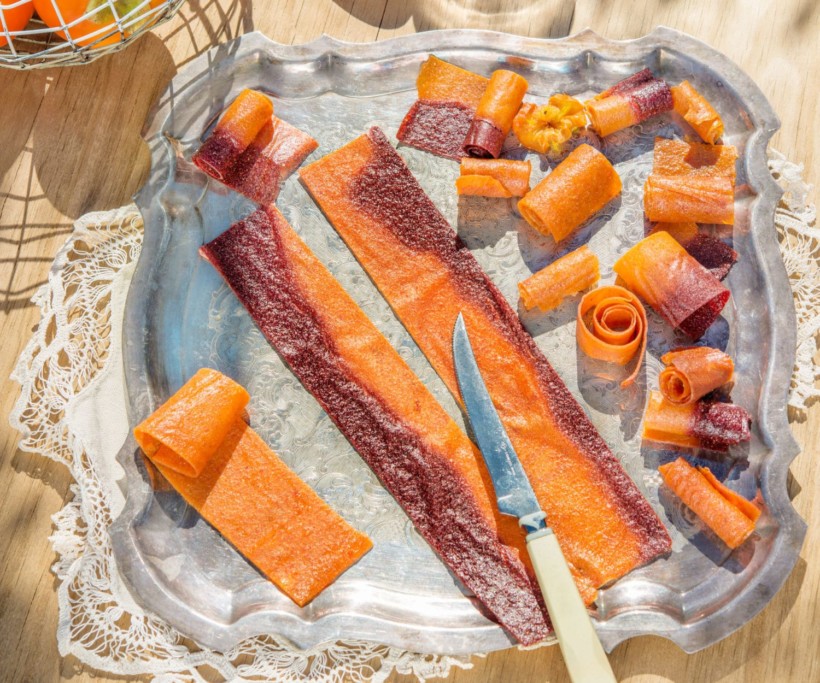
Persimmon and strawberry fruit leather
This persimmon and strawberry fruit leather is the perfect lunchbox filler for kids.
Ingredients
- 4 persimmons washed
- 5-6 tablespoons sugar
- 3 tablespoons lemon juice
- 1 teaspoon lemon zest finely grated
- 500 g frozen strawberries defrosted
Instructions
- Preheat oven to 75°C.
- Remove leaves and shallow cores from persimmons. Cut into quarters, remove pips and place in blender. Purée until smooth (should make about 2 cups) then tip into medium bowl and stir in 3 Tbsp sugar, 2 Tbsp lemon juice and the zest.
- Rinse out blender bowl, add strawberries and purée until smooth. This should also produce about 2 cups of purée.
- Stir 2 Tbsp sugar and remaining 1 Tbsp lemon juice through strawberry purée. Taste for sweetness and add a little more sugar if preferred.
- Line an oven tray with baking paper. (When pouring the purée, aim to make strips 3-4cm wide and leave a 2cm border around edge of tray.) Using a large spoon, drizzle a strip of persimmon purée across width of tray (the shorter distance), then pour a strip of strawberry purée beside it. Repeat until tray is covered.
- Smooth over any gaps between the two flavours. Cook in oven for 2½-3 hours.
- When set, the leather should be firm to touch but not crisp. If the middle is not yet set, trim off the cooked leather on either side (cut through paper with scissors), turn paper around (for even cooking) and cook for a further 30 minutes or until set. To speed things up, leave oven door ajar or wedge it with a folded tea towel to allow steam to escape.
- When cool, peel off paper, slice leather into strips and store flat in an airtight container (or roll up each strip and store in a jar) in the pantry.
Notes
Persimmons 101
The most common variety of persimmon in New Zealand is Fuyu, which has been here since 1873.
Fuyus are non-astringent and can be eaten raw or cooked. They are native to China and have a mild, not-too-sweet flavour.
Do not use the astringent type (Hachiya, identifiable by their pointy ends) for this recipes.
This recipe comes from the June/July issue of NADIA magazine.
Fuyus are non-astringent and can be eaten raw or cooked. They are native to China and have a mild, not-too-sweet flavour.
Do not use the astringent type (Hachiya, identifiable by their pointy ends) for this recipes.
This recipe comes from the June/July issue of NADIA magazine.

